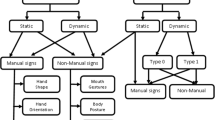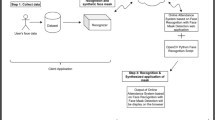Abstract
The use of optical character recognition (OCR) has achieved considerable success in the sorting of machine-printed mail. The automatic reading of unconstrained handwritten addresses however, is less successful. This is due to the high error rate caused by the wide variability of handwriting styles and writing implements. This paper describes a strategy for automatic handwritten address reading which integrates a postcode recognition system with a hybrid verification stage. The hybrid verification system seeks to reduce the error rate by correlating the postcode against features extracted and words recognised from the remainder of the handwritten address. Novel use of syntactic features extracted from words has resulted in a significant reduction in the error rate while keeping the recognition rate high. Experimental results on a testset of 1,071 typical Singapore addresses showed a significant improvements from 24.0% error rate, 71.2% correct recognition rate, and 4.8% rejection rate using “raw” OCR postcode recognition to 0.4% error rate, 65.1% correct recognition rate, and 34.5% rejection rate using the hybrid verification approach. The performance of the approach compares favourably with the currently installed commercial system at Singapore Post, which achieved 0.7% error rate, 47.8% correct recognition rate, and 51.5% rejection rate for 6-digit postcode using the same test data.
Similar content being viewed by others
References
Downton, A.C. and Kabir, E. 1989. Verification techniques for highperformance OCR of hand printed postcodes. In IEE Colloquium on Character Recognition and Applications, London, UK, 7:1–9.
Gader, P., Keller, J.M., and Cai, J. 1995. A fuzzy logic system for the detection and recognition of handwritten street numbers. IEEE Trans. on Fuzzy Systems, 3(1):83–95.
Hendrawan 1994. Recognition and Verification of Handwritten Postal Addresses. PhD Thesis, Department of Electronic Systems Engineering, University of Essex.
Ianakiev, K. and Govindaraju, V. 1999. Fuzzy control structures in multiple parameter systems: An application in handwritten address interpretation systems. In Proc. 18th Int. Conf. of the North American Fuzzy Information, pp. 918–922.
Lee, C.K. and Leedham, G. 2000a. A novel fusion of holistic and analytical paradigms for the recognition of handwritten address fields. In Proc. Thirteenth Int. Conf. on Industrial and Engineering Applications of Artificial Intelligence and Expert Systems, New Orleans, Louisiana, USA, pp. 492–501.
Lee, C.K. and Leedham, G. 2000b. Rapid analytical verification of handwritten alphanumeric address fields with dynamic classifier. In Proc. Seventh Int.Workshop on Frontiers in Handwriting Recognition, Amsterdam, The Netherlands, pp. 571–576.
Madhvanath, S., Kleinberg, E., and Govindaraju, V. 1997. Empirical design of a multi-classifier thresholding/control strategy for recognition of hand-written street names. Int. Journal of Pattern Recognition and Artificial Intelligence, 11(6):933–946.
Mitchell, B.T. and Gillies, A.M. 1989. A model-based computer vision system for recognising handwritten zip codes. Machine Vision and Applications, 2(4):231–243.
Nuijt, M.R. and Gerwen, E. 1999.Aprobabilistic model for postcode recognition: A first-step towards probabilistic address interpretation. In Proc. Fifth Int. Conf. on Document Analysis and Recognition, Bangalore, India, pp. 761–764.
Seni, G. and Cohen, E. 1994. External word segmentation of off-line handwritten text lines. Pattern Recognition, 27(1):41–52.
Shridhar, M. and Kimura, F. 1995. Handwritten address interpretation using word recognition with and without lexicon. IEEE Int. Conf. on Systems, Man and Cybernetics, 3:2341–2346.
Srihari, S.N., Cohen, E., Hull, J.J., and Kuan, L. 1989. A system to locate and recognise zip codes in handwritten addresses. Int. Journal of Research and Engineering—Postal Applications, 1:37– 45.
Srihari, S.N. and Kuebert, E.J. 1997. Integration of hand-written address interpretation technology into the United States Postal Service Remote Computer Reader System. In Proc. Fourth Int. Conf. on Document Analysis and Recognition, Ulm, Germany, vol. 2, pp. 892–896.
Author information
Authors and Affiliations
Rights and permissions
About this article
Cite this article
Lee, C., Leedham, C. A New Hybrid Approach to Handwritten Address Verification. International Journal of Computer Vision 57, 107–120 (2004). https://doi.org/10.1023/B:VISI.0000013085.47268.e8
Issue Date:
DOI: https://doi.org/10.1023/B:VISI.0000013085.47268.e8




